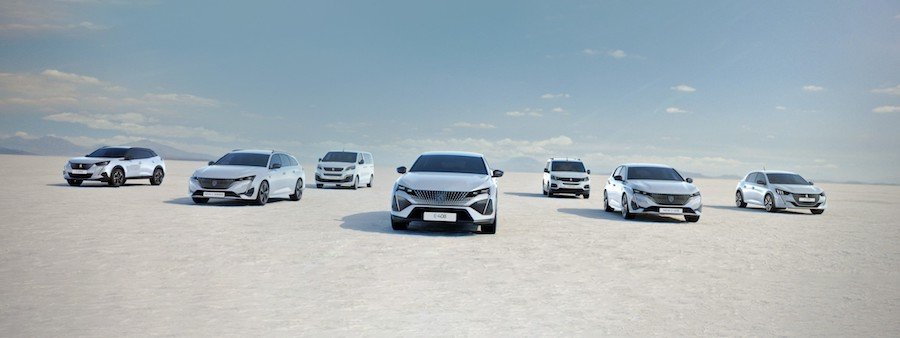Peugeot Announces Five New EVs, Novel Ownership Experience as Part of the E-Lion Project

The lion brand is also overhauling operations and proposes a new ownership experience thanks to its vehicles’ very long life cycle.
Peugeot’s new E-Lion strategy reminds us of the Toyota moment from December 2021. Peugeot doesn’t have 15 electric vehicles on stage, but what it proposes will probably change the automotive industry. Like Toyota, Stellantis is not a champion of electrification, although this started to change with the Jeep EVs and the upcoming Ram 1500 EV. Peugeot’s name might not sound familiar in North America, but the new strategy will surely put the lion brand on the map in the coming years.
Named E-Lion Project, the new strategy, of course, involves five new electric vehicle launches. For the very short timeframe of only two years, this is nothing short of spectacular. The new EVs are E-308, E-308 SW (touted as the first European electric station wagon), E-408, E-3008, and E-5008. Peugeot already offers the E-208 electric city car, so its entire range, top to bottom, would have an electric vehicle at start.
The first to launch will be the E-308 and E-308 SW, powered by a brand-new electric drive unit developing 115 kW (154 horsepower). Peugeot promises a 400-km (249-mile) WLTP range, which doesn’t sound too impressive considering how optimistic the WLTP cycle already is. The compact duo will offer segment-leading efficiency, with an average energy consumption of 12.7 kWh per 100 km (20.8 kWh per 100 miles).
The Peugeot E-3008 will be revealed in the second half of 2023 with three electric powertrains, including a dual-motor configuration. The E-3008 will go against the Tesla Model Y and Ford Mustang Mach-E in Europe, and Peugeot claims it has what it takes to take the lead. The E-3008 will be the first car launched with the new state-of-the-art STLA Medium platform. The range will be 700 km (435 miles) under the WLTP cycle.
Petrolheads were not forgotten, as Peugeot also announced overhauling its combustion engine lineup. All of them will be electrified via a 48-volt mild-hybrid system that integrates a 21-kW electric motor into the dual-clutch gearbox. Peugeot claims this setup can achieve increased low-end torque and a 15% reduction in fuel consumption.
Peugeot wants all its future electric vehicles to have a very long lifecycle of 20 to 25 years, compared to the current 15-year cycle in the auto industry. Peugeot also wants to refurbish and recycle key parts and refresh key wear and tear parts to make the car feel new again every time it changes hands.
“Imagine no more second-hand cars. Instead, a fresh and personalized car you can update or upgrade anytime, depending on your needs,” said Matthias Hossann, Peugeot Design Director. “An always up-to-date product that keeps its value throughout its lifetime.”
Besides new cars, a new design, and new ownership philosophy, Peugeot also proposes a new buying experience. The brand will introduce pay-as-you-go plans with monthly payments as low as 150 euros ($163 at the time of writing). The cheaper one is called Peugeot Pay As You Go and includes only the basics. On the other hand, Peugeot Your Way is an all-inclusive plan with all service and maintenance costs covered. With either of them, the customers will be able to upgrade their cars or return them whenever they wish.
